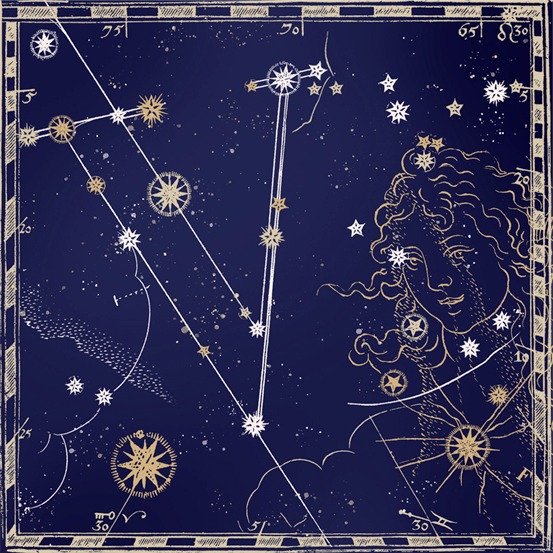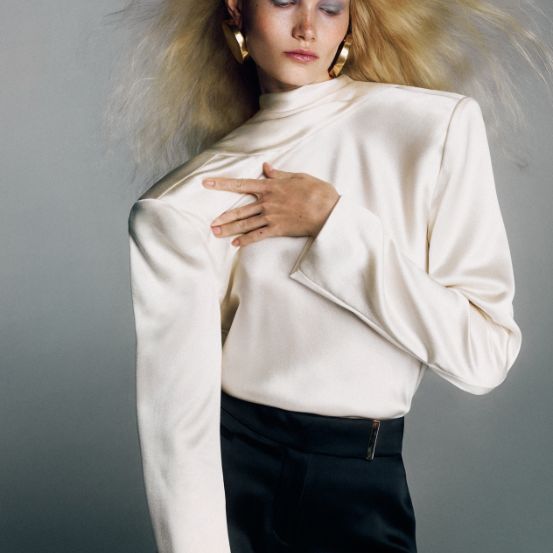What's Next
Trends come and go, but the oracles remain — those who, in a present organized by chaos, can predict the future.
The present is, in itself, difficult to understand. From tragic news to mysterious TikToks, the truth of the world is mythical. The perception of what is happening around us is always on the tip of our tongue and, just when we think we understand, chaos reveals itself again. War, post-pandemic, economic crises, frightening political tides: understanding the present is hard to do, nor do we think about guessing the future. But there are prophets who dare. We're not talking about those with crystal balls in hand, but professionals who, by looking at the world, are able to discern not only what we're going to look like, but also what we're going to wear. Fashion, in its most scientific conception, is a barometer for the world of those who wear it. The trends that appear and disappear with the ease of the seasons (although even these are already suffering, don't tell us about global warming) are not futile - they are complex reactions to the reality with which we are confronted. There are no lone visionaries looking at cards, the truth is, as usual, much more challenging.
WGSN, the company that practically invented the craft of trend forecasting, has turned this seemingly magical act into a science. Over the course of 27 years, the company has witnessed structural changes. From the rise of social media to the birth of terms like sustainable, WGSN hasn't just seen the world change - it has predicted the metamorphosis. Carla Buzasi, CEO of this fashion oracle, assures us that there is no magic involved. “Our analysis is complex, but it can be divided into two types of data that we analyze: qualitative and quantitative. The latter involves analyzing an immense amount of information which is then considered based on curves using artificial intelligence algorithms. This is the power of the tools that, over almost thirty years, we have had to implement in order to remain at the forefront.” The science Buzasi describes is understandable today, but when it was implemented it was futuristic - such are the privileges of those who know what tomorrow holds. The other component of his formula is not only more understandable, it's a tradition that has been maintained since the company was founded. “Beyond machines, we rely on people. We have specialists in all the subjects we forecast. These are people who have an encyclopedic knowledge of extremely specific subjects. This group includes people who have worked in laboratories for decades, who know how to make a moisturizer, or who have been furniture designers and know the production line. We have a huge variety of these types of specialists, from the people who know how to create a cell phone to the person who designs the covers for it. We rely on them to inform us on issues that are essential but difficult to understand through numbers alone.”
But even with the science explained, trend forecasting is not easy to understand. How certain are WGSN's prophecies? How far-reaching are its omens? What is the scale of its predictions? Fortunately, on a strangely sunny day for the British fall, Buzasi has time to answer all our questions. “Of course there is a margin of error, we don't make predictions as simple as 'everyone is going to wear red dresses,' our target is slightly broader.” The trend forecaster elaborates, “What we do is give companies the information we collect on consumer trends, how they choose to modulate and adapt their product is a decision they have to make. We don't want the companies we work with to just obey what we say. The aim is for our advice to steer their creativity in the right direction.”
Of course, his work is far more complex than the futility sometimes associated with fashion. As Buzasi is keen to point out, fashion is always an individual reaction to the social context. “In a year like 2024, when half the world has gone to vote, political perception is extremely important to know. We need to understand how legislation and public policies affect people, not just as consumers, but as human beings.” What the expert describes is profound. To understand what we will want to use or buy, Buzasi needs to understand how we will feel in the future. “It's impossible to overestimate the importance of human emotion in the choices we make when it comes to our lifestyles, the products we buy, and the experiences we want to take part in.” The expert not only understands the feeling of powerlessness in the face of the present, she also knows the extent to which it is caused. “We are living through a permanent crisis. We've had to become very adaptable in recent years, we've become very resilient. But that also means we want different things. We want clothes that protect us, that keep us warm. We want objects that make us feel safe. This goes from the choice of fabrics to the silhouette.” Buzasi's words materialize immediately. Think of the recent rise of fur coats or oversized clothing - all reactions that the expert predicts. In fact, it's not just trends that WGSN predicts, but rebirths are also on the calendar. “Take Ugg boots, for example, which were a hit when I was a teenager. Not that I want to reveal my age, but I grew up with Sienna Miller wearing them in every paparazzi photo. Now they're back but in a different way. As we become more demanding as consumers, it's no longer enough for them to be comfortable, they have to be fashionable.” His word is law. In recent months, the brand of fur-filled boots has launched versions in denim, in the shape of cowboy boots, with embroidery, as over-the-knee boots, among many others. What Buzasi highlights is something extremely interesting for the passive fashion consumer. “Many people think that the tide of trends simply exists in a vacuum, these silhouettes or fabrics don't appear and disappear out of nowhere, they are always reactions to something that goes far beyond fashion, they are a tool to understand how people adapt to a world they rarely control.”
As we delve into the science behind the prophecy of Fashion, the deeper the waters seem to get. Buzasi doesn't just understand patterns of consumption of objects, she understands and predicts social behaviors. “Just think of something like the climate crisis and the warnings it has raised in consumers' minds. Although it's always there, it's not as linear as it might seem. One of the things we're looking at more seriously for 2026 is something we call moral damages.” The phenomenon isn't necessarily new, but Buzasi is one of the first people to give it a name and apply it in a practical way to the fashion industry. “What this concept describes is how consumers - indeed, human beings - make decisions that go against their morals. We look at this especially when it comes to buying fast fashion. If we survey people from Generation Z, for example, they will say that sustainability is essential in their lives and yet we are seeing the rise of ultra-fast fashion brands because of their consumption habits. When people act in a way that they know is 'wrong', that is moral damage. It may seem irreverent, but everyone has done it, it's something we do as humans.” But, fascinating as it may be, how does this information inform us about the future of fashion? “This is something that all brands need to be aware of. There is a fascinating possibility here for brands, if they know how to use this opportunity, they just need to enable consumers to shop sustainably in an affordable way.” This is where Buzasi's main objective lies: it's not enough to understand what consumers want, but what they do regardless of their desires. “Consumer behavior doesn't necessarily manifest itself in the way consumers say it will. As trend analysts, we have to be able to see across the gap between intention and reality.”
Fantastic. We understand the impact and scope of what WGSN accomplishes. But there's a dimension that Buzasi doesn't mention. Yes, chaos can be studied, but there are unforeseen events that are impossible to predict. Take the pandemic. Like the other eight billion people in the world, not even Buzasi's crystal ball was enough to predict the impact Covid-19 would have on the fashion industry. The expert immediately refutes that the goal in situations as rare as the pandemic “was to adapt to focus on short-term trends. We usually make forecasts two years in advance, sometimes more, in some sectors. That changed the situation. Interestingly, what we saw was the acceleration of some of the things we were predicting - we had predicted the rise of working from home, comfort clothing, etc.”
It's reassuring to hear Buzasi speak. We went into this conversation (and the Zoom meeting) expecting to hear about the latest algorithm, or how artificial intelligence is capable of telling us everything that's going to happen on its own, but what the expert reveals is different. Although she is “dependent on algorithms in a way,” what sets them apart is the notion that to understand people, you need people. “We don't have a secret, but if we did it would be that we talk to people, we talk to people all the time, so I spend as much time as possible with our clients, I spend as much time as possible with them. The more questions I ask, the more informed I am about the sector.” That's why the CEO needs specialists. “What's most important for us is that we're not reading things on the Internet. I encourage everyone at WGSN not to sit behind a computer screen, going to Google is not research, it's not a proper forecast. No one person at WGSN can predict a trend on their own, because one person's view of the world will never reflect the world at large.” This dimension is particularly important in the industries that Buzasi reports on. “We're not dealing with engineering or purely practical goods, there's a human dimension to the creativity of each of the six thousand companies we work with around the world. We're just the people who give the directions so that people can express their passions.”
Originally published in Vogue Portugal's What's Next Issue, from December 2024. Full credits and stories in the print issue.
Most popular


Relacionados
.jpg)

Réveillon no Hotel Tivoli Avenida Liberdade: 1 hotel, 3 experiências para celebrar a passagem de ano
22 Dec 2025
.jpg)




